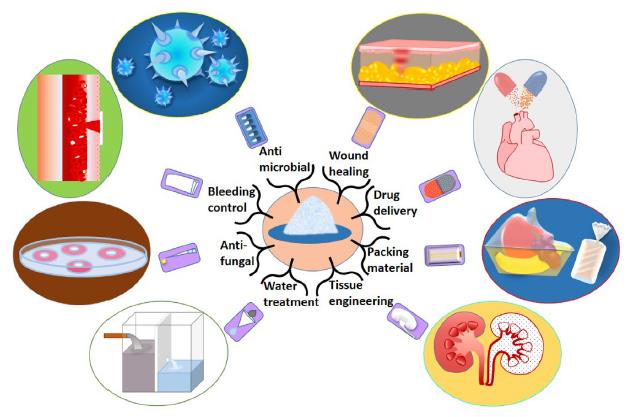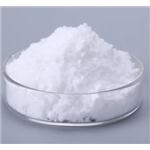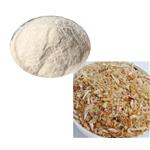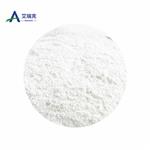The structure and processing of Chitin
Oct 11,2021
Chitin (CN) is a polysaccharide and abundant organic compound, being the second most common biopolymer in nature in the world after cellulose. CN is commonly found in invertebrates, as crustacean shells or insect cuticles, but is also present in the vast majority of fungi, some mushrooms envelopes, green algae, cell walls, and yeasts.Several million tons of marine waste are produced every year, which are very hazardous for the environment due to their high biological and chemical oxygen demand, pathogens, organic matter, etc. The waste produced by the marine foods and marine food industries, the shells of shrimp, crab, and other crustaceans, is the major commercial source of CN.
CN is a linear aminopolysaccharide consisting mainly of β-(1-4)-linked 2-acetamido- 2-deoxy-β-D-glucopyranose units and partially of β-(1-4)-linked 2-amino-2-deoxy-β-D-glucopyranose.The structures of CN and chitosan (CS) are depicted in Fig. 1.1.

FIGURE 1.1 Sources and extraction of chitosan.
CN is insoluble in common solvents because of its high crystalline structure and hydrogen bonding between carbonyl, hydroxyl, and acetamide groups. CN has a strong intra- and intermolecular hydrogen bonding network, which provides the insoluble property of this polymer in common organic and inorganic solvents. However, it is soluble in highly concentrated inorganic acids, such as hydrochloric acid, sulfuric acid, and phosphoric acid.
CS is the most important derivative of CN and is prepared by the alkaline deacetylation of CN.CS has been extensively studied for various applications because of its biocompatibility, biodegradability, mucoadhesiveness, and derivability from abundant and inexpensive biomass. It also possess antimicrobial activity, wound-healing properties, and hemostatic activity, which make CS-based composites very useful in the biomedical field. Moreover, it has also been used in agriculture as a fertilizer, in food as a stabilizer and thickener, and in water treatment as an ion exchanger. In addition. CS is readily processed into nanofibers, sponges, nanoparticles (NPs), gel, beads, scaffolds, membranes, and standalone films. The main advantage of CN and CS is the ease with which they can be processed into different forms like beads, gels, microparticles, NPs, nanofibers, scaffolds, etc.
Processing of chitin and chitosan blends and composites
CH and CS have many applications, thus various forms and structures are needed. As CS is soluble in aqueous acidic media, it is able to form films and scaffold by the solution casting method and simple blending techniques and it is also used in food industries and nutraceutical and biomedical fields, Therefore the spray drying/freeze-drying method has also been used. The different techniques for processing CN and CS blends and composites are shown in Fig. 1.2 and summarized in Table 1.1.
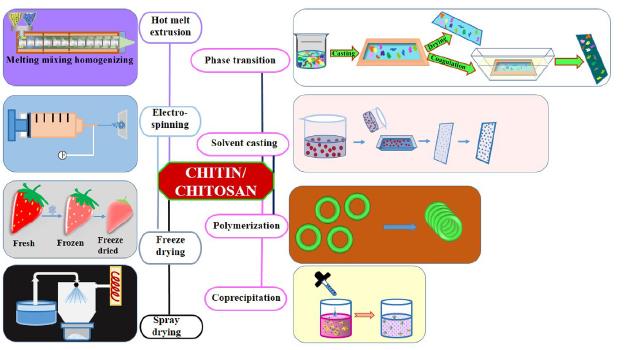
FIGURE 1.2 Various techniques for processing chitin and chitosan blends and composites
Simple blending
A simple blending method is widely used which to combine two or more polymers by solution blending or extrusion blending. The binary polycaprolactone (PCL)/CS blends were fabricated by experimentation and a dissipative particle dynamics simulation with homogeneous morphology and excellent ductility, which indicated that the combination of experiments and computer simulation can be an effective way to design and develop polymer blends with tailored properties for advanced technology applications.
Different edible films were prepared by blending zein, CS, PVA, and PEG using the Box-Behnken design. These films showed good thermal and mechanical properties due to potential interactions through hydrogen bonding between the polar groups of zein and hydroxyl groups of PVA and CS, suggesting the effectiveness of the blending technique in improving the compatibility of biopolymers and the overall functionality of edible films.
Lyophilization
Lyophilization or freeze-drying is a dehydration process, where the material is subjected to freezing, followed by sublimation under lower pressure. Lyophilization is important in many fields, mainly due to the exact retention of the product properties even after storage. Sixteen CS-based composite sponges were prepared by a lyophilization technique with blending of five different polymers—hydroxyl propyl methyl cellulose, sodium carboxymethylcellulose, carbopol, sodium alginate, and HA—with three different CS-polymer ratios.
Spray drying and freeze spray drying
By spray drying, powder form of the product can be obtained from a slurry or solution, which is atomized and directed to a drying chamber where it is encapsulated with hot gas. The dry powdered form of product obtained and consistent particle size distribution etc. have made it a popular technique in different industries.
Electrospinning
The electrospinning technique is also a widely used technique, in which a polymer melt or solution is charged under electric field and ejected through a spinneret to form ultrafine fibers. Homogeneous electrospun polylactide-co-PCL (PLA-PCL)/CS blend nanofibers were prepared by an electrospinning technique for tissue regeneration and drug delivery with improved hydrophilicity, cell attachment, and proliferation without losing the entangled nanofibers structure and stability.
Solution/solvent casting method
The solution or solvent casting method is one of the most widely used methods to form various blends and composites, particularly in CS processes. Solvent casting produces high-quality films or composites by dissolving different polymers into a solution and particles/molds with specific dimensions are added to this solution. The solvent is evaporated to obtain a composite/scaffold with the required specifications. CS/polyacrylamide and CS/partially hydrolyzed polyacrylamide blends were prepared by a casting technique.
Melt extrusion method
One or more polymer particles are subjected to temperature and pressure to melt them and passed through an extrusion orifice. This technique produces products with uniform shape and density. Blends of thermoplastic corn starch and CS were produced by the melt extrusion method; they had good thermal stability due to the addition of CS, enhanced elongation at break, and decreased tensile strength and elastic modulus, revealing that the blends have potential for packaging applications.
Coprecipitation method
Coprecipitation method is a technique for simultaneous precipitation of a soluble compound along with another component from a solution, by forming a composite.
Polymerization
Polymerization is the reaction where monomer units combine together to form a larger chain or network polymers. Hexamethylene diisocyanate and hyroxylterminated polybutadiene-based polyurethanes were prepared following step-growth polymerization by the introduction of varying mole ratios of CS and curcumin.
Phase inversion/separation process
Phase inversion is carried out by the removal of the solvent from a liquid polymer solution to form a solid membrane. Sometimes, instead of evaporation, it is performed by casting the polymer solution on a suitable support, followed by immersing it in a coagulation medium containing a nonsolvent. While dealing with emulsions, phase inversion refers to the conversion of the oil-in-water emulsion to the water-in-oil emulsion.
- Related articles
- Related Qustion
- Chitin: source and biomedical applications Nov 22, 2023
Chitin's versatile properties show promise in advancing treatment options in neurological, musculoskeletal, cardiovascular, and hematological diseases.
- The application of chitin? Oct 8, 2021
Chitin is the second most abundant polysaccharide available in nature, after cellulose. Composed of N-acetyl-D-glucosamine and D-glucosamine units, this polymer can be obtained from different sources, such as animals (crustaceous, insects,
- What is Chitin? Oct 8, 2021
Chitin is a naturally occurring polysaccharide found in the shells of living organisms such as crabs, lobsters, tortoise, shrimps, and insects or it can be generated via fungal fermentation processes. Chitin is a naturally occurring polymer
Chitosan is the most common chitin derivative. Obtained thought the deacetylation of the chitin macromolecule, by subjecting it to hot alkali (e.g., NaOH concentrated solutions) treatment, chitosan is characterized by a low acetylation degr....
Oct 8,2021Biochemical EngineeringChitin and chitosan has been used in a wide range of applications in different industrial and medicinal fields such as food packaging, antimicrobial wound healing, water treatment, tissue engineering, drug release, and bleeding control.....
Oct 11,2021SaccharidesChitin
1398-61-4You may like
- Xanthan Gum - Application in Food Industry
Mar 10, 2022
- Carrageenan - Application in Meat Products
Mar 10, 2022
- Starch Performance in Meat
Mar 9, 2022




